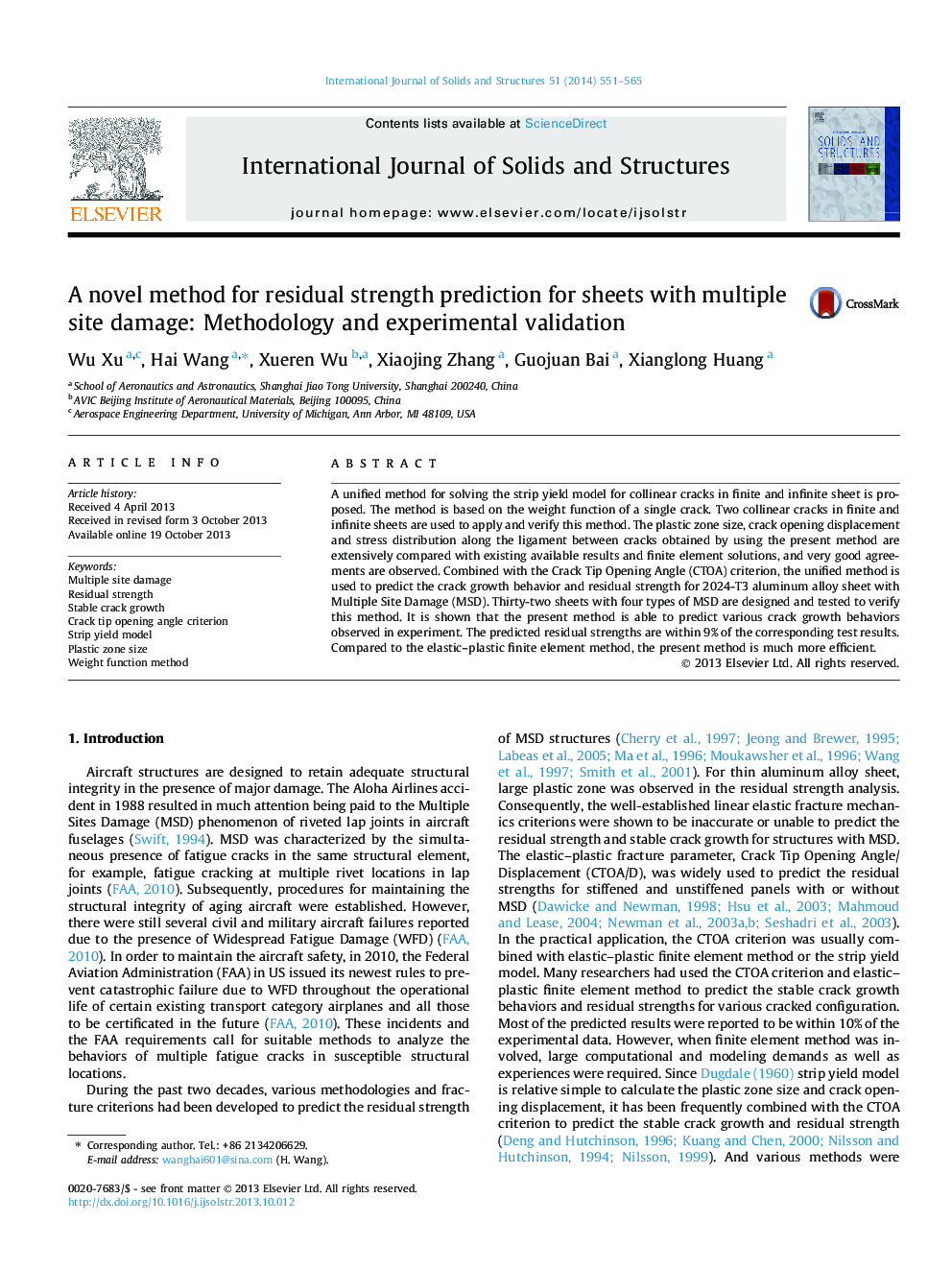| کد مقاله | کد نشریه | سال انتشار | مقاله انگلیسی | نسخه تمام متن |
|---|---|---|---|---|
| 277650 | 1430246 | 2014 | 15 صفحه PDF | دانلود رایگان |
• A method is proposed to analyze the strip yield models for collinear cracks in finite sheet.
• The method is shown to be simple, accurate and efficient.
• It is able to predict the stable crack grow for sheet with multiple site damage.
• The predicted residual strength is with 9% of the test result.
A unified method for solving the strip yield model for collinear cracks in finite and infinite sheet is proposed. The method is based on the weight function of a single crack. Two collinear cracks in finite and infinite sheets are used to apply and verify this method. The plastic zone size, crack opening displacement and stress distribution along the ligament between cracks obtained by using the present method are extensively compared with existing available results and finite element solutions, and very good agreements are observed. Combined with the Crack Tip Opening Angle (CTOA) criterion, the unified method is used to predict the crack growth behavior and residual strength for 2024-T3 aluminum alloy sheet with Multiple Site Damage (MSD). Thirty-two sheets with four types of MSD are designed and tested to verify this method. It is shown that the present method is able to predict various crack growth behaviors observed in experiment. The predicted residual strengths are within 9% of the corresponding test results. Compared to the elastic–plastic finite element method, the present method is much more efficient.
Journal: International Journal of Solids and Structures - Volume 51, Issues 3–4, February 2014, Pages 551–565
